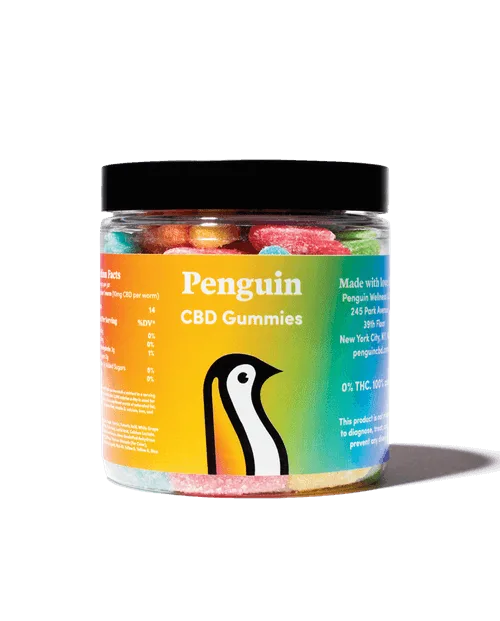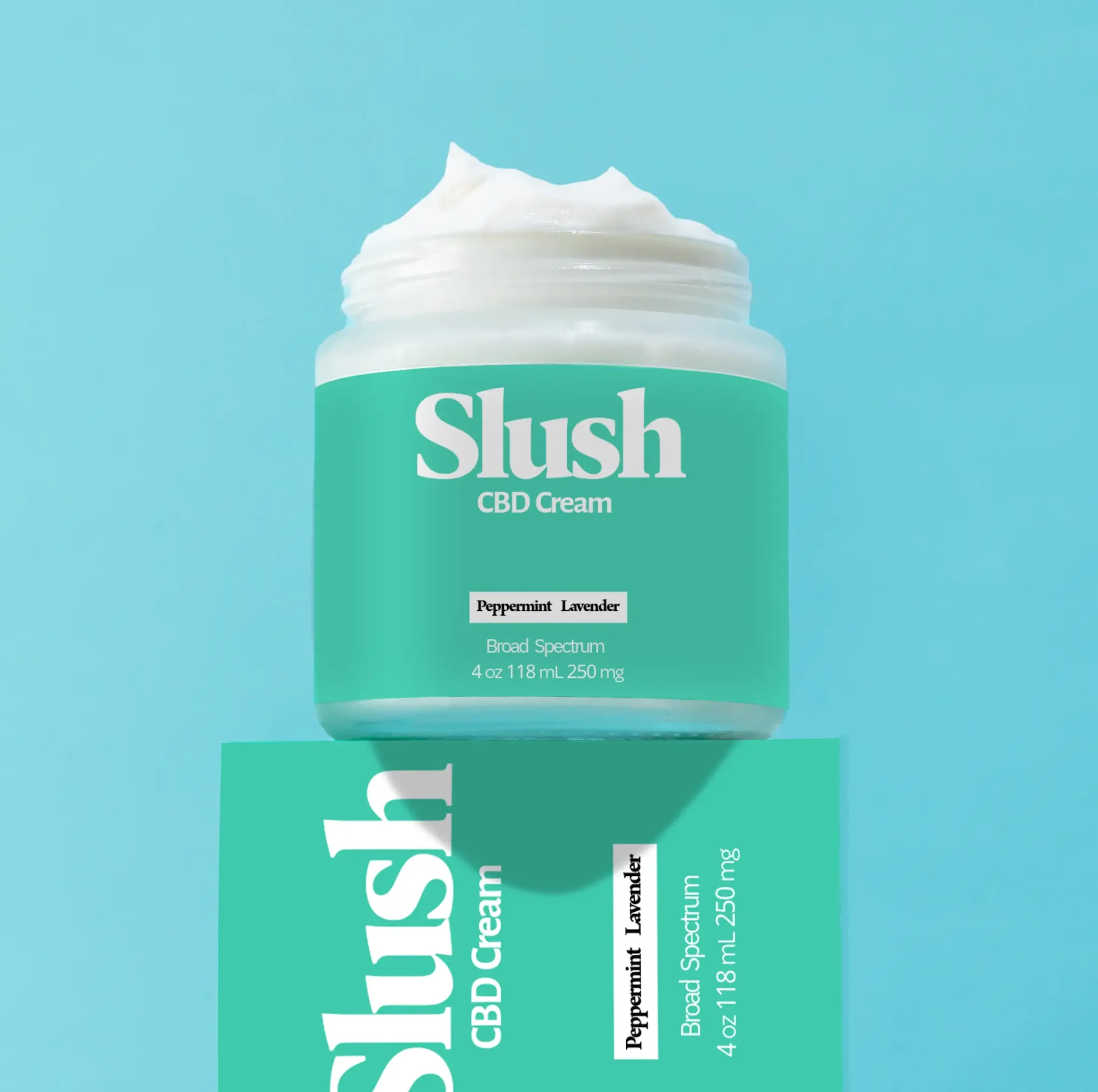What Is THC? Here's Everything You Need to Know
 By Penguin CBD
By Penguin CBDThe proverbial boogeyman of the cannabis plant, THC is the chemical that is responsible for much of the confusion and misinformation surrounding CBD products. Maybe your someone specifically after THC, or maybe your someone looking for a product free from this infamous chemical; either way, learning more about THC will ensure that you're getting what you pay for when you purchase a product or just talk about the subject with a friend.
The recent relatively rapid legalization of industrial hemp and medical and recreational cannabis in certain states has left many people with less than a clear understanding of the terminology that comes from the cannabis and the industrial hemp industries.
We want to make clear possible ambiguities and misunderstandings in this field, so you can at least talk about this subject intelligently even if you don't decide ever to use a cannabis or industrial hemp-derived product.
In the case you are learning about the various cannabinoids because you're looking for a CBD product, you'll want high-quality products produced by trusted brands. You can find some right here, for instance, when you buy Penguin's CBD oil or Penguin’s CBD gummies.
While reading this article, we are going to explain fundamental concepts related to the Cannabis plant and then tie the concepts together for you, so you get a comprehensive view of where we stand both legally and scientifically with cannabis and the Industrial Hemp plant.
The good news is that you've already started the process of learning, and it's only going to get better from here!
Cannabinoids
We should start off early in this article, making sure we have a good understanding of basic terminology used when talking about CBD products and this starts with understanding cannabinoids. The term cannabinoids is a term used to describe the group of chemicals found in the Cannabaceae family of plants from which Cannabis Sativa and Cannabis Indica are derived (which includes the industrial hemp plant).
Simple enough, right? Let's continue our journey of describing cannabinoids and our body's system that responds to these chemicals. Currently, there are over 100 different known cannabinoid chemicals that can be extracted from the Cannabis plant but don't worry - we are only going to focus on a few well-known cannabinoids such as cannabidiol (CBD), THC, and possibly mention others in passing.
What we have talked about so far are cannabinoids found in plants, which is why these chemicals are called phytocannabinoids. Phytocannabinoids need to be distinguished from endocannabinoids, the chemicals made by the human body, which can activate the endocannabinoid system of the body.
The human body makes certain endocannabinoid chemicals that, when combined with the receptors, comprise the endocannabinoid system. In humans, we can focus our study of the receptors for cannabinoids to two: CB1 and CB2.
An easy, albeit simplified, and not entirely accurate way to distinguish CB1 from CB2 receptors is to think of CB1 receptors as confined to the brain and spinal cord (Central Nervous System, CNS). CB2 receptors, meanwhile, are found all throughout the body and are found in fewer numbers in the CNS.
So why go through all the trouble of explaining the two primary cannabinoid receptors? It's because these receptors help us understand the effects felt when utilizing THC or other cannabinoids. As you'll learn in more detail later in the article, THC has an increased preference for the CB1 receptors, while cannabidiol (CBD) has a preference for CB2 receptors, although this is a highly simplified generalization!
Cannabidiol (CBD)
Cannabidiol (CBD), a cannabinoid made famous due to the recent laws that legalized the production and selling of this substance, is known to interact with CB1 and CB2 receptors and the 5-HT1A, TRPV1–2 vanilloid receptors while blocking the alpha-1 adrenergic and mu-opioid receptors. If you think about that, this chemical has a lot of activity in the body!
When analyzing the receptors that CBD affects in different ways, you'll come away with the realization that CBD has more of a sedating rather than a stimulating effect on the body. While the chemical formula for CBD was guessed in the 1940s, it wasn't until the 1960's that its actual structure was determined. So, all in all, CBD is a relatively new chemical known to humans.
Currently it's very early in the research process for CBD and currently, so that means no medical claims can or should be made about the chemical itself. However, early studies have been promising.
To learn more about what CBD does and doesn't do, check out this article! It's worth the read.
Delta-9-Tetrahydrocannabinol
With a chemical name like Delta-9-Tetrahydrocannabinol, it's no wonder it's been shortened to the three simple letters T-H-C. If you were born after 1940, you likely have grown up knowing Cannabis and its component THC. Before the compound was identified in the 1940s, people just didn't know that THC or other cannabinoids were causing them to feel the way they did when they used the Cannabis plant.
THC is best known for its ability to induce the feeling of being "high" when using marijuana. Yep, this is the culprit for this feeling and the often associated negative attitudes and misunderstandings surrounding the use of CBD. But before you go throwing the baby out with the bathwater, keep reading to hear the arguments for including THC in products and some of the proposed effects of this substance, besides the one already mentioned.
THC primarily affects the CB1 receptor in the brain, and spinal cord, which makes sense given this is the chemical in Cannabis with the psychoactive property that will make you feel high when taken in high enough doses.
As to why the Cannabis plant first produced THC and other cannabinoids, one hypothesis is that cannabinoids, primarily THC, prevents insects, particularly moths, from eating or otherwise damaging the plant. Some may think this a relatively useless piece of information, but interesting nonetheless.
Marijuana
Before we get into why some people advocate for the inclusion of THC in CBD products and when this may not be the best choice, let's clarify a common misunderstanding. Many people don't really understand the difference between the industrial hemp plant and marijuana, which can cause biases against the use of CBD products.
Marijuana is one of the names given to the Cannabis plant, including Cannabis sativa, Cannabis indica, and Cannabis ruderalis. Marijuana is currently classified as a schedule I controlled substance by the United States Controlled Substances Act. Schedule I drugs are considered chemicals that are extremely addictive, have no accepted medical use, and for which there is uncertainty about the safety of the substance when used under the supervision of a physician.
While marijuana is illegal at the Federal level, several states within the United States have legalized its medical and recreational use. Medical Marijuana is a prescription written by a physician to patients suffering from certain conditions.
Although Marijuana is Federally illegal in the United States, some other countries have taken a more progressive view of recreational marijuana. Countries such as Canada and Uruguay allow their residents 19 years (often 18 years) or older to carry 30 grams of Cannabis on their person at any time.
Industrial Hemp
While industrial hemp is ultimately derived from the Cannabis sativa plant, there are significant differences both chemically and legally when compared to marijuana. Industrial hemp is a plant specifically cultivated for industrial and commercial use for people.
Industrial hemp was illegal to own and cultivate up until the 2018 Farm Bill, which legalized the commercial cultivation of this plant at the Federal level. If you're asking yourself what really distinguishes industrial hemp from marijuana, it comes down to the THC content. The 2018 Farm Bill stipulated that for industrial hemp to be legally cultivated for commercial uses, it had to contain 0.3% THC or less.
When used to create CBD products, industrial hemp can be further cultivated and bred to increase the amount of cannabidiol and other non-THC cannabinoids.
Industrial hemp is utilized by manufacturers other than those that are producing CBD products because of hemp strong plant fibers. This plant is used to create products such as clothing, cooking oil, insulation, paper products, and much more. Hemp has some unique properties that make it an underutilized plant.
What are the unique properties, you ask? Hemp is a fast-growing plant that produces durable fibers. This plant also has the ability to pull toxins out of the soil; ever wonder what kind of plants they used to clean the soil after the Chernobyl nuclear disaster?
It was hemp in a process called phytoremediation. Keep in mind that because hemp is so effective at pulling toxins and pollutants out of the soil, industrial hemp used for CBD products and personal care products should be grown in clean, uncontaminated soil.
Industrial hemp can be ingested by humans in forms other than CBD, as hemp seeds have various nutritional benefits.
Whether you grab a handful of individual hemp seeds, pour hemp seed over your salad, or eat a paleo diet friendly hemp bread, hemp seeds can be added as a part of a balanced healthy diet. While being rich in minerals such as iron, Hemp seeds also contain large amounts of polyunsaturated fatty acids (PUFAs).
Hopefully, you're getting the picture by now that industrial hemp is not the same thing as marijuana and realize that the hemp plant has a lot of untapped potential for commercial and personal use.
The Recap
To briefly recap what we have discussed so far, THC, which stands for delta-9-tetrahydrocannabinol, is a chemical that has been known to humans for almost eighty years. THC is the cannabinoid found in abundance in marijuana, which produces the "high" feeling but is found in levels 0.3% or less in the industrial hemp plant.
The inclusion of THC in full-spectrum CBD products is thought to be beneficial because of the "entourage effect," which proposes that inclusion of other cannabinoids enhances the effects of CBD.
However, while it can contribute to the “entourage effect,” THC is not necessary for it to happen. Hence the demand for broad-spectrum products that exclude it entirely. At Penguin CBD, we offer broad-spectrum CBD oils, capsules, and creams.
It should be noted that CBD-labeled products produced and sold in states where recreational and medical cannabis is legal may not be made from industrial hemp plants, and thus contain significantly more THC than 0.3%. While CBD containing less than 0.3% THC is legal in all 50 states, THC is still classified as a Schedule I controlled substance.
Hopefully, at this point, you feel you have a general understanding of THC, cannabis, and industrial hemp, which can help you with making informed purchase decisions. You can also use your newfound knowledge to show off while chatting with a stranger on a plane, your coworkers, or others you encounter!










